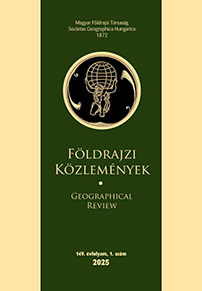VESZTESÉGTÉRKÉPEZÉS EGY BELSŐ PERIFÉRIÁS MAGYAR RÉGIÓBAN, A NAGYKUNSÁGBAN
Abstract
In our study, we examined six demographically declining and shrinking settlements in a traditional Hungarian cultural region, Nagykunság/Greater Cumania, which is considered an inner peripheral region: we used statistical data and development documents, loss mapping and the Kruskal–Wallis test methodology. The analysis based on the loss mapping of six municipalities showed that on average the municipalities perceived their losses as slightly less than medium. The research has shown that, although their original natural and demographic characteristics are very similar, the municipalities have followed significantly different development paths, have different potentials to emerge from peripheral existence and have different resilience to challenges. It can be concluded that the source of the problem lies fundamentally in the quality of local society: the regional average is less educated than the national average, has lower levels of training and very low levels of cultural demand. The decline of local societies is clear: as it stands, the study predicts not a development based on endogenous internal resources, but a slow decline that is likely to become permanent in the light of global, national and local socio-economic, political and environmental trends.
Copyright (c) 2025 Tibor Kovács, Csaba Ruszkai, Mária Vasvári

This work is licensed under a Creative Commons Attribution-NonCommercial-NoDerivatives 4.0 International License.



